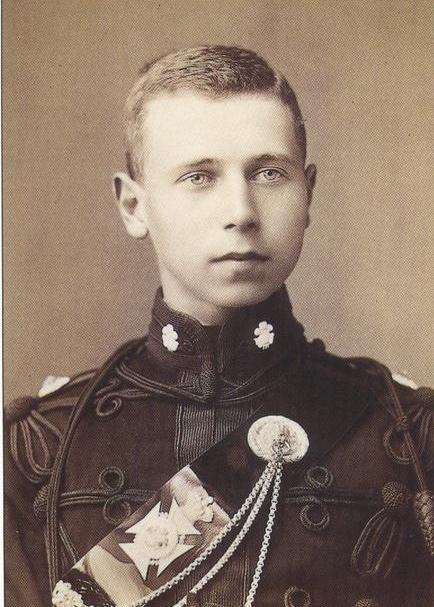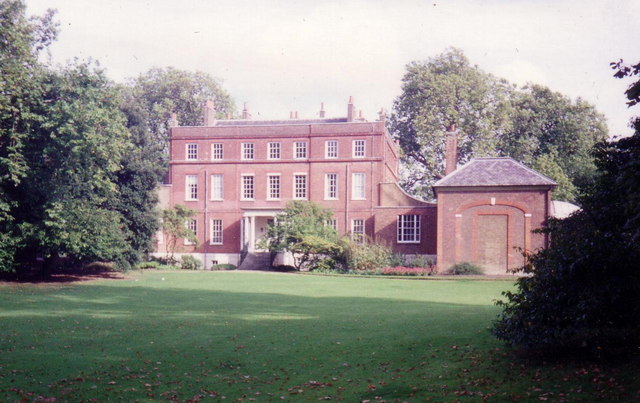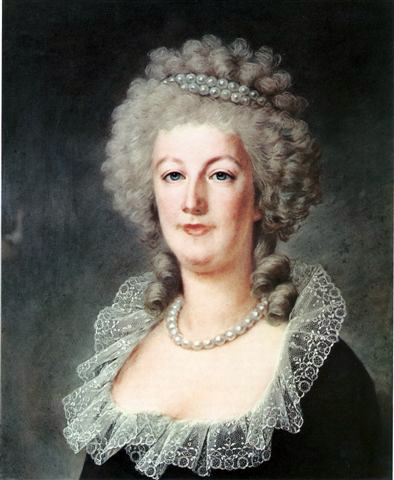© Unofficial Royalty 2024

Prince Alfred of Edinburgh; Credit – Wikipedia
October 15, 1527 – Birth of Maria Manuela of Portugal, Princess of Asturias, the first of the four wives of Felipe II, King of Spain, in Coimbra, Portugal
Maria Manuela was the daughter of João III, King of Portugal and Catherine of Austria. On November 15, 1543, two sixteen-year-olds, Maria Manuel and Felipe, Prince of Asturias (the title used by the heir apparent or heir presumptive to the throne of Spain), were married. Sadly, Maria Manuela and Felipe had a short marriage. On July 8, 1545, Maria Manuela gave birth to a son and four days later, she died, aged seventeen, due to childbirth complications.
Unofficial Royalty: Maria Manuela of Portugal, Princess of Asturias (Spain)
October 15, 1538 – Death of Germaine of Foix, Queen of Aragon, second wife of King Ferdinand II of Aragon in Llíria, Valencia, Kingdom of Aragon, now in Spain; buried at the Monastery of San Miguel de los Reyes in Valencia
In 1504, Ferdinand’s wife Isabella I, Queen of Castile and León died. Isabella’s crown was inherited by her daughter Juana and her husband Philip of Habsburg. Two years later, 54-year-old Ferdinand married 18-year-old Germaine. The marriage was accepted in Ferdinand’s Kingdom of Aragon but it was poorly received by the people of the Kingdom of Castile and León who saw Ferdinand’s marriage to Germaine as a betrayal of their late queen, his first wife Isabella I, Queen of Castile and León. In 1509, Germaine gave birth to a son Infante Juan of Aragon, Prince of Girona, who died shortly after his birth. Had he survived, the crown of Aragon would have been separated from the crown of Castile and León. There were no further children from the marriage. In 1516, Ferdinand died, and Ferdinand’s grandson the powerful Holy Roman Emperor Charles V who was also King Carlos I of Spain (among other titles) arranged two marriages for Germanine over the years. Germaine died on October 15, 1536, aged forty-eight, in Llíria, Valencia, probably from edema caused by obesity.
Unofficial Royalty: Germaine of Foix, Queen of Aragon
October 15, 1711 – Birth of Elisabeth Thérèse of Lorraine, Queen of Sardinia, third wife of Carlo Emanuele III, King of Sardinia, at the Château de Lunéville, Duchy of Lorraine, now in France
In 1737, the twice-widowed 35-year-old Carlo Emanuele III, King of Sardinia married 25-year-old Elisabeth Therese. Carlo Emanuele’s four surviving children from his second marriage to Polyxena of Hesse-Rheinfels-Rotenburg were Elisabeth Therese’s stepchildren. Elisabeth Therese and Carlo Emanuele III had three children but only the third child Benedetto survived childhood. Sadly, Elisabeth Therese died, aged 29, from puerperal fever (childbed fever), thirteen days after giving birth to Benedetto.
Unofficial Royalty: Elisabeth Thérèse of Lorraine, Queen of Sardinia
October 15, 1795 – Birth of King Friedrich Wilhelm IV of Prussia at the Crown Prince’s Palace in Berlin, Kingdom of Prussia, now in Brandenburg, Germany
Friedrich Wilhelm became King of Prussia upon his father’s death in 1840. As his father had done himself, the new King changed many of his father’s policies – including reducing the censorship of the press and promising to provide a new constitution for the Prussian people. In 1849, the King was offered the title Emperor of the Germans but refused as he did not feel it was the right of the Frankfurt Parliament to offer it. Instead, he wanted to reestablish the Holy Roman Empire, where a College of Electors would hold the authority to name an Emperor. In 1871, his brother and successor, Wilhelm I, became the first German Emperor (Kaiser).
Unofficial Royalty: King Friedrich Wilhelm IV of Prussia
October 15, 1825 – Birth of Marie of Prussia, Queen of Bavaria, wife of King Maximilian II of Bavaria, born at the Berlin City Palace in the Kingdom of Prussia, now in Brandenburg, Germany
Full name: Marie Friederike Franziska Hedwig
In 1842, Marie married the future King Maximilian II of Bavaria. The couple had two sons, King Ludwig II and King Otto. Both of Marie’s sons were thought to have suffered from mental illness that severely hampered their abilities to rule Bavaria. After her husband died in 1864, Marie lived in relative seclusion, splitting her time between her country home in Elbigenalp and Hohenschwangau Castle in Füssen, Kingdom of Bavaria, now in the German state of Bavaria. In 1883, her elder son, King Ludwig II, was deemed incompetent, and Marie’s brother-in-law, Prince Luitpold of Bavaria, was appointed Prince Regent. Days later, King Ludwig II and his doctor were found dead in a lake, and Marie’s younger son became King Otto I, also under the Regency of Prince Luitpold.
Unofficial Royalty: Marie of Prussia, Queen of Bavaria
October 15, 1874 – Birth of Prince Alfred of Edinburgh, Hereditary Prince of Saxe-Coburg and Gotha, son of Prince Alfred, Duke of Edinburgh and Saxe-Coburg and Gotha, and grandson of Queen Victoria, at Buckingham Palace in London, England
Full name: Alfred Alexander William Ernest Albert
Alfred was the only son of Prince Alfred, Duke of Edinburgh and Duke of Saxe-Coburg and Gotha, second son of Queen Victoria of the United Kingdom, and Grand Duchess Maria Alexandrovna of Russia, the only surviving daughter of Alexander II, Emperor of All Russia. As it was expected he would one day inherit the ducal throne of Saxe-Coburg and Gotha, Alfred was raised primarily in Germany. Separated from his family, he received a strict German education and later served as a Lieutenant in the Prussian 1st Foot Guards in Potsdam. But, unlike many of his relatives, he did not enjoy military life. In August 1893, his father succeeded to the ducal throne of Saxe-Coburg and Gotha, and young Alfred became the Hereditary Prince. It is generally accepted that Alfred shot himself while the rest of the family was gathered for his parents’ 25th-anniversary celebrations in January 1899. He initially survived the gunshot but died the following month.
Unofficial Royalty: Prince Alfred of Edinburgh
October 15, 1893 – Birth of King Carol II of Romania at Peleş Castle in Sinaia, Romania
Carol II was a great-grandson of Queen Victoria through his mother Princess Marie of Edinburgh. In 1918, Carol made an unsanctioned marriage to Joanna “Zizi” Lambrino. The marriage was annulled seven months later but the couple continued to live together, and the following year, in January 1920, they had a son. In 1921, Carol married his second cousin, Princess Helen of Greece and they had one son, the future King Michael (Mihai) of Romania. Within a few years, Carol began an affair with Magda Lupescu, and in 1925 he renounced his rights to the throne. In 1927, Carol’s father King Ferdinand died, and six-year-old Michael became King of Romania. Carol and Helen divorced in 1928. In June 1930, Carol negotiated with the Prime Minister for his return to the throne. His earlier renunciation was voided, and he was restored as King of Romania, replacing his son Michael. His rocky reign lasted ten years until he was forced to abdicate in 1940, in favor of his son Michael. Carol and Magda moved to Brazil in 1944, where they married in 1947. They soon moved to Estoril, Portugal, where Carol would live in exile for the remainder of his life.
Unofficial Royalty: King Carol II of Romania
October 15, 1904 – Death of King Georg of Saxony at Pillnitz Castle in Dresden, Kingdom of Saxony, now in Saxony, Germany; buried in the Wettin Crypt at the Dresden Cathedral
As his elder brother King Albert of Saxony had no children, Georg was heir-presumptive to the Saxon throne from the time of Albert’s accession in 1873. Albert died in 1902, and Georg became King of Saxony at nearly 70 years old. Because of his age, many people felt he should step down and let the throne pass to his son, Friedrich August. His unpopularity increased during the textile workers’ strike in Crimmitschau in 1903-1904. Refusing to give in to the demands for higher wages and better working conditions, the King sent military forces into the city to force the end of the strike. His reign lasted only two years. After falling ill with influenza earlier in the year, King Georg died at the age of 72.
Unofficial Royalty: King Georg of Saxony
October 15, 1959 – Birth of Sarah, Duchess of York, former wife of Prince Andrew, Duke of York, born Sarah Margaret Ferguson at 27 Welbeck Street, Marylebone in London, England
Sarah, Duchess of York, despite her financial problems and scandals, has remained supportive and respectful of her former family and the monarchy. Since the early years of her marriage, Sarah has been involved with numerous charities and organizations. Since 1990, she has been Patron of The Teenage Cancer Trust, and a few years later, founded Children in Crisis. Sarah, her ex-husband and their daughters established Key To Freedom in 2013. Other organizations she supports include Mental Disability Rights International and the Motor Neurone Disease Association. She has worked with the American Cancer Society and in 2014 was named ambassador for the Institute of Global Health Innovation at Imperial College in London.
Unofficial Royalty: Sarah, Duchess of York
October 15, 2005 – Birth of Crown Prince Christian of Denmark, son of King Frederik X of Denmark, at Rigshospitalet in Copenhagen, Denmark
Full name: Christian Valdemar Henri John
Christian is the oldest child of King Frederik X of Denmark and his Australian-born wife née Mary Donaldson. He is first in the line of succession to the Danish throne and the Crown Prince of Denmark.
Unofficial Royalty: Prince Christian of Denmark
October 15, 2012 – Death of former King Norodom Sihanouk of Cambodia in Beijing, China; ashes buried at the Silver Pagoda, Royal Palace, in Phnom Penh, Cambodia
Norodom Sihanouk reigned as King of Cambodia during two periods, 1941 – 1955 and 1993 – 2004. He also served as Prime Minister of Cambodia eight times between 1945 – 1962, Chief of State of Cambodia (1960 – 1970 and in 1993), and as President of the State Presidium of Democratic Kampuchea (1975 – 1976). Sihanouk became king during French colonial rule in 1941 upon the death of his maternal grandfather King Monivong. He secured Cambodian independence from France in 1953. He abdicated in 1955 and was succeeded by his father, Suramarit, so he could directly participate in politics. A new constitution came into effect in 1993, and Sihanouk was reinstated as the King of Cambodia. Citing his poor health, Sihanouk announced his second abdication in October 2004. From 2009 – 2011, Sihanouk spent most of his time in Beijing, China for the treatment of various medical issues. Sihanouk died of a heart attack in Beijing, sixteen days before his 90th birthday.
Unofficial Royalty: King Norodom Sihanouk of Cambodia
This article is the intellectual property of Unofficial Royalty and is NOT TO BE COPIED, EDITED, OR POSTED IN ANY FORM ON ANOTHER WEBSITE under any circumstances. It is permissible to use a link that directs to Unofficial Royalty.


















